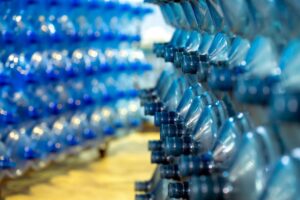The EPA recently granted a petition from the Center for Environmental Health, Public Employees for Environmental Responsibility, Alaska Community Action on Toxics, Clean Cape Fear, Clean Water Action, Delaware Riverkeeper, and Merrimack Citizens for Clean Water to address per- and polyfluoroalkyl substances (PFAS) formed during the fluorination of plastic containers—perfluorooctanoic acid (PFOA), perfluorononanoic acid (PFNA), and perfluorodecanoic acid (PFDA). These PFAS have been found in plastic containers used for a variety of household consumer, pesticide, fuel, automotive, and other industrial products.
“Long-chain PFAS like PFOA, PFNA and PFDA build up in our bodies and the environment over time,” states the EPA website. “Even small amounts can significantly contribute to people’s long-term exposure and health risk for cancers, impacts to the liver and heart, and immune and developmental damage to infants and children. To protect people from cancer and other serious health problems caused by exposure to harmful PFAS, earlier this year EPA included PFOA and PFNA in a national drinking water standard for PFAS and made PFOA one of the first two PFAS to be designated as hazardous substances under the Comprehensive Environmental Response, Compensation, and Liability Act (CERCLA), also known as Superfund.”
PFAS are also known as “forever chemicals” due to their resistance to breaking down over time in human bodies and the environment.
“Today marks another important step to protecting public health from harmful PFAS,” said Earthjustice Attorney Kelly Lester in an Earthjustice press release. “EPA has recognized the unreasonable risks posed by PFAS produced during plastic fluorination, and its commitment to pursue needed regulation of these toxic substances is a step forward. EPA must now act swiftly to regulate these PFAS and protect communities from the devastating health harms associated with PFAS exposure.”
Background
According to the Agency, it was made aware of PFAS contamination in a mosquitocide in September 2020.
The Agency later determined that the PFAS found came from the fluorinated high-density polyethylene (HDPE) plastic container used to store the product, which was manufactured by Inhance Technologies LLC. The EPA determined that when Inhance fluorinates containers, it manufactures many types of PFAS, including PFOA, PFNA, and PFDA. The EPA announced in March 2021 that these PFAS can migrate into liquid products in the containers and can continue migrating over time.
PFOA, PFNA, and PFDA are subject to the 2020 long-chain PFAS Significant New Use Rule (SNUR), which requires notice to the EPA before chemical substances and mixtures are used in new ways.
“In March 2022, EPA’s Office of Enforcement and Compliance Assurance issued a Notice of Violation to Inhance for its manufacture of four PFAS, including PFOA, PFNA, and PFDA, without submitting the statutorily required notification to the Agency before it began manufacturing them,” the EPA website continues. “In September 2022, Inhance informed EPA that it intended to submit significant new use notices (SNUNs) for its manufacture of several PFAS.
“After these actions, Inhance submitted SNUNs in December 2022 for nine long-chain PFAS created in the fluorination of its plastic containers, including PFOA, PFNA and PFDA. In December 2023, EPA issued orders under section 5 of the Toxic Substances Control Act (TSCA) directing the company to stop production of the PFAS. In these orders and associated risk assessment, EPA determined that three of the PFAS—PFOA, PFNA, and PFDA—are highly toxic and present unreasonable risks that cannot be prevented other than by prohibiting the manufacture of these chemicals. Inhance challenged the Agency’s orders, and the U.S. Court of Appeals for the Fifth Circuit vacated the orders in March 2024.”
On April 11, 2024, the EPA received the coalition’s petition, filed under Section 21 of the Toxic Substances Control Act (TSCA). The petition requested that the EPA establish regulations under TSCA Section 6 prohibiting the manufacturing, processing, use, distribution in commerce, and disposal of PFOA, PFNA, and PFDA formed during the fluorination of plastic containers.
By granting this petition, the EPA stated it will promptly commence an appropriate proceeding under TSCA Section 6. The Agency further stated it intends to request information, including the number, location, and uses of fluorinated containers in the United States; alternatives to the fluorination process that generates PFOA, PFNA, and PFDA; and measures to address risk from PFOA, PFNA, and PFDA formed during the fluorination of plastic containers.
Regarding other actions the Agency has taken about PFAS in plastic containers:
- In March 2022, the EPA provided information to stakeholders about the possibility of the formation and migration of PFAS in HDPE containers and similar plastics (i.e., fluorinated polyolefins).
- The EPA released results from its evaluation of the leaching potential of PFAS from the walls of certain fluorinated HDPE containers into the liquids stored in those containers in September 2022.
- In February 2024, the Agency released a new method to detect 32 PFAS directly from the walls of containers made from HDPE. This new method allows industries that use HDPE containers and container manufacturers to test the containers before use, preventing PFAS contamination of products stored in these containers. The method also has wide applicability for other industries, as it can be modified to test for PFAS in additional solid samples such as fabric, packaging paper, and more.

